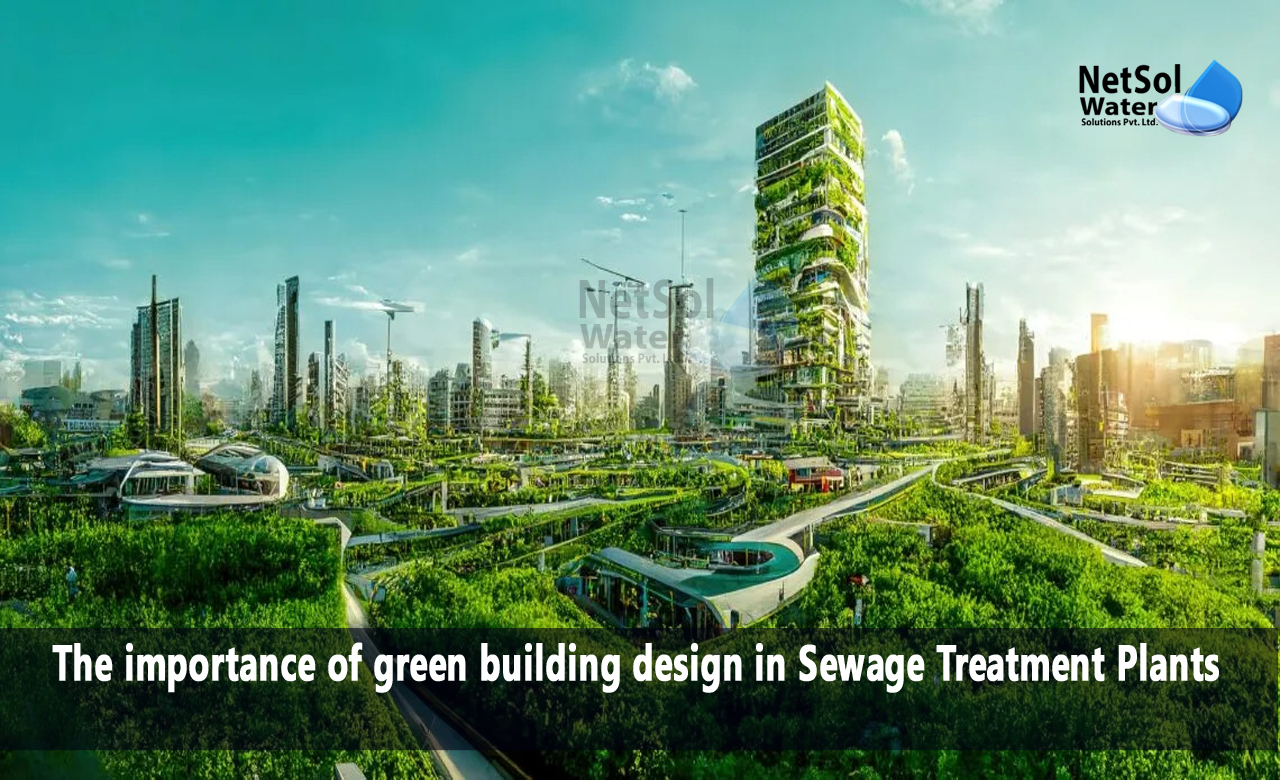Why STP Plant is important in green building design?
The integration of green building design principles with sewage treatment plants (STPs) presents a unique opportunity to enhance sustainability in the wastewater management sector. By incorporating environmentally friendly practices into the design and operation of STPs, we can achieve synergies that promote sustainable development.
Here we will see the importance of green building design in STPs, highlighting key areas of synergy and the resulting benefits for the environment and communities.
Green Building Design Principles
Some of the design principles for green building design are as follows:
1. Energy Efficiency:
Green building design focuses on minimizing energy consumption through efficient equipment selection, insulation, and intelligent control systems. Implementing energy-saving measures in STPs, such as energy recovery from biogas generated during treatment processes, can significantly reduce the carbon footprint of these facilities.
2. Water Conservation:
Green building design emphasizes water conservation and efficient water management. Incorporating strategies such as rainwater harvesting, greywater recycling, and water-efficient fixtures in STPs can reduce water demand and enhance overall water resource sustainability.
3. Material Selection and Waste Reduction:
Green building design promotes the use of sustainable materials and the reduction of construction waste. Utilizing recycled or locally sourced materials in STP construction, implementing waste management strategies, and encouraging recycling contribute to a more sustainable and circular approach.
Synergies between Green Building Design and STPs
Some points that show synergy between STPs and Green Building Design are as follows:
1. Energy Optimization:
Green building design principles can be applied to STPs to optimize energy consumption. By incorporating energy-efficient technologies, utilizing renewable energy sources, and implementing intelligent control systems, STPs can minimize energy requirements and decrease their environmental impact.
2. Water Resource Management:
Green building design's focus on water conservation aligns with the goals of STPs. Implementing water-efficient processes, such as membrane filtration and advanced treatment technologies, allows for the effective utilization and reuse of water resources, reducing strain on freshwater sources.
3. Natural Resource Recovery:
Green building design promotes the recovery and reuse of resources. STPs can incorporate systems for nutrient recovery from wastewater, such as phosphorus and nitrogen, which can then be repurposed as fertilizers or used in other applications. This approach reduces reliance on synthetic fertilizers and enhances resource circularity.
4. Ecological Integration:
Green building design emphasizes ecological integration and biodiversity enhancement. STPs can incorporate natural treatment systems, such as constructed wetlands, to improve water quality and provide habitats for local flora and fauna. This integration supports ecosystem services and enhances the ecological value of the facility.
Benefits of Integrating Green Building Design in STPs
Some of the benefits that we get when we integrate green building design in STPs are as follows:
1. Environmental Benefits:
Integrating green building design principles in STPs reduces energy consumption, minimizes water usage, and promotes the conservation of natural resources. This leads to lower greenhouse gas emissions, reduced water stress, and a smaller ecological footprint, contributing to a healthier environment.
2. Community Benefits:
Green building design in STPs improves the quality of life for nearby communities. The utilization of sustainable materials, noise reduction measures, and aesthetic enhancements create a more pleasant and harmonious environment. Additionally, the emphasis on public engagement and education fosters community awareness and involvement in sustainable practices.
3. Long-term Cost Savings:
Integrating green building design in STPs can result in long-term cost savings. Energy-efficient systems reduce operational expenses, water conservation measures decrease utility costs, and resource recovery provides economic opportunities. These savings can be reinvested in further sustainability initiatives or allocated to other community needs.
Summary:
The integration of green building design principles with sewage treatment plants presents a powerful approach to advancing sustainable development in the wastewater management sector. By incorporating energy efficiency, water conservation, and waste reduction strategies, STPs can significantly reduce their environmental impact while enhancing community well-being. The synergies between green building design and STPs create a path towards a more sustainable future, where wastewater management systems play a vital role in promoting environmental stewardship and sustainable development.
Leading manufacturer of sewage treatment plants in India.
Netsol Water is the leading manufacturer, supplier, and exporter of a quality selection of water treatment, and wastewater treatment products in India, by using advanced sewage treatment methods.
RO plants, water softeners, ETPs, STPs, DM plants, AMC, O&M, Ultra filtration, UV, Ozonation, ZLD plants, Anoxic tanks, and other goods and services are available from us. We also provide services to businesses in sectors including automotive, pharmaceutical, textile, pulp & paper, beverages, refineries, schools, hospitals, office buildings, and hotels, among others.
Netsol Water is Greater Noida-based leading water & wastewater treatment plant manufacturer. We are industry's most demanding company based on client review and work quality. We are known as best commercial RO plant manufacturers, industrial RO plant manufacturer, sewage treatment plant manufacturer, Water Softener Plant Manufacturers and effluent treatment plant manufacturers. Apart from this 24x7 customer support is our USP. Call on +91-9650608473, or write us at enquiry@netsolwater.com for any support, inquiry or product-purchase related query.



